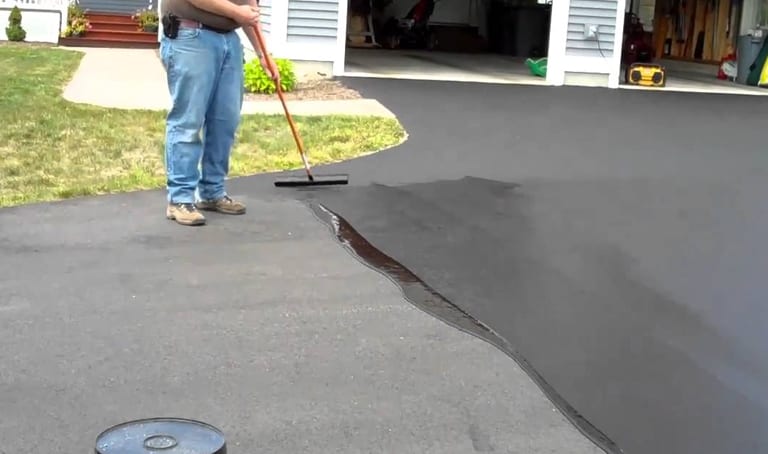Resilient Outcomes: Asphalt Patch Repair With Precision Sealing
Resilient Outcomes: Asphalt Patch Repair With Precision Sealing
Blog Article
Cold Mix Asphalt Vs. Hot Mix Asphalt: Which Is Right for You?

Make-up Differences
Cold mix and hot mix asphalts vary dramatically in their structure, with unique features that influence their performance and applications. Cold mix asphalt is produced by emulsifying the asphalt binder with water and an emulsifying representative prior to blending it with aggregate. This approach enables for the asphalt to be convenient at lower temperature levels, making it optimal for temporary repairs and for use in colder weather. Warm mix asphalt, on the other hand, is manufactured at heats, usually between 300-350 ° F, which aids to accomplish much better compaction and a more durable last product. The hot mix asphalt manufacturing process entails heating the accumulation and asphalt binder independently before integrating them at the asphalt plant.
In addition, cold mix asphalt tends to be much less dense and much more versatile than hot mix asphalt. This versatility makes it far better matched for locations with higher degrees of activity, such as driveways or roadways with hefty website traffic. In contrast, warm mix asphalt is known for its high resilience and resistance to rutting and splitting, making it a favored selection for highways and high-traffic roadways where longevity is important.
Installment Refine Variations
The process of setting up cold mix and warm mix asphalt displays significant differences in their demands and treatments. In comparison, warm mix asphalt demands an extra intricate installation process. Due to the heating demands, hot mix asphalt installations are commonly carried out by professionals with customized devices, guaranteeing a much more irreversible and structurally sound result.
Sturdiness and Long Life Variables
When taking into consideration asphalt alternatives, sturdiness and durability are crucial elements to assess for lasting pavement efficiency. Hot mix asphalt (HMA) is understood for its outstanding longevity and longevity.
In terms of longevity, HMA generally surpasses CMA as a result of its superior strength and resistance homes. HMA sidewalks have a longer life span, requiring much less regular repairs and upkeep, which can equate to set you back savings over time. Furthermore, HMA sidewalks are a lot more conveniently adjustable to fulfill certain job requirements, better improving their durability.
Expense Considerations
Considering the financial effects is an essential facet when reviewing the option in between hot mix asphalt (HMA) and cold mix asphalt (CMA) for pavement projects. While the preliminary cost of hot mix asphalt is generally higher than that of cold mix asphalt, HMA frequently provides an extra economical More Help solution in the lengthy run due to its exceptional longevity and long life.
Along with material expenses, it's important to take into consideration the expenditures linked with setup and upkeep when comparing HMA and CMA. HMA generally calls for customized tools and knowledgeable labor for correct setup, which can impact total task expenses. Conversely, CMA is much easier to collaborate with and can typically be used making use of easier strategies, possibly reducing installment expenditures. Inevitably, the decision in between HMA and CMA should think about not just the initial expense yet also the long-term monetary effects to figure out one of the most cost-effective option for the particular pavement task.
Environmental Impact Comparison
Contrast of the investigate this site environmental impacts in between hot mix asphalt (HMA) and cool mix asphalt (CMA) exposes distinctive differences in sustainability practices. HMA production needs high temperature levels, leading to boosted energy usage and greenhouse gas exhausts.
Moreover, the usage of CMA commonly includes reusing existing asphalt sidewalk, promoting source conservation and minimizing the amount of waste sent out to landfills. By deciding for CMA over HMA, roadway building tasks can contribute favorably to environmental preservation efforts.
Verdict
To conclude, the option in between cold mix asphalt (CMA) and hot mix asphalt (HMA) relies on different factors such as structure, installment process, longevity, longevity, price, and environmental impact. asphalt patch repair. While CMA offers a quick and affordable solution for minor repair services, HMA makes sure superior resilience and durability for hefty website traffic areas. Take into consideration these factors thoroughly to figure out which kind of asphalt is the best selection for your paving needs

Thinking about the economic implications is an essential element when assessing the selection between hot mix asphalt (HMA) and chilly mix asphalt (CMA) for pavement tasks. While the initial expense of warm mix asphalt is generally greater than that of cool mix asphalt, HMA typically gives a more go to this website affordable remedy in the lengthy run due to its exceptional longevity and longevity. asphalt repair.Comparison of the environmental impacts in between warm mix asphalt (HMA) and cool mix asphalt (CMA) discloses distinct distinctions in sustainability methods.In verdict, the selection between chilly mix asphalt (CMA) and warm mix asphalt (HMA) depends on numerous elements such as composition, installation process, toughness, long life, cost, and environmental impact
Report this page